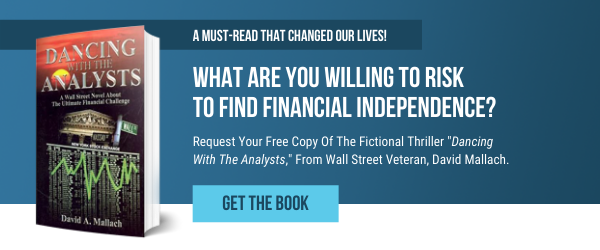Every day, prospective clients come to us with a stack of investment statements including a wide-ranging mix of mutual funds, ETFs, bonds, and stocks. They say something to the effect of, “My portfolio is not doing well enough,” and look at us expectantly for a diagnosis — or preferably — a cure. A quick look at their paperwork confirms what I have suspected: they think their portfolio diversification is up to par, but it’s not.
Prior to explaining the benefits of our disciplined strategy and the quality of our research, I first point out that a good portion of their issue is that they own too many securities. Understanding how to diversify a portfolio starts with understanding the difference between risk and volatility.
Is Your Portfolio Diversified or Di-worsified??
The investment world loosely defines diversification as the practice of investing in a wide range of different types of assets in order to minimize the volatility of a portfolio. Consequently, most wealth managers will advise you to buy into a number of different asset classes and hundreds, if not thousands of securities. And that’s exactly where the trouble begins. This unfortunately common practice actually results in a condition called diworsification, where the risk/reward trade-off in your portfolio actually turns against you, adding unnecessary risk to your long-term objectives. “Diworsification” often happens when advisors attempt to pacify your emotions to be able to stomach volatility and the ups and downs of the market.
Capitalize on Volatility
At our firm, the definition of diversification does not encompass reducing volatility. Volatility is the variability of a portfolio over time. We believe that you shouldn’t sacrifice your overall objectives at the expense of keeping volatility at bay. Simply said: those other wealth managers who introduce other asset classes in order to “help” you stomach the ups and downs of the market - aren’t helping you in the long term.
You can only limit the amount of risk that is actually diversifiable. Market risk, also called systemic risk, is risk that cannot be diversified. It’s the risk of investing in the overall market. Markets crash because of a pandemic and that shuts down markets everywhere, and most everyone is affected. That’s considered a non-diversifiable risk. But let’s say you own certain companies in a particular sector that are very sensitive to changes in interest rates. You can absolutely diversify by adding securities to the portfolio from other sectors that tend not to be directly affected during such times.
More Isn’t Always Better
The average mutual fund comprises over 100 securities. However, the maximum effects of diversification are achieved at somewhere around 15 holdings. Most wealth managers are not willing to do what Beck Bode does, which is to say, “In order for you to maximize the value of your portfolio over the next twenty years, you should invest in fifteen stocks.”
You can’t completely diversify out all risks, but you diversify out the upper 90% of the risk with roughly fifteen securities. You can only limit the amount of risk that is actually diversifiable. Of course, you can add more securities to the portfolio and choose to own 50 instead of fifteen, and that does, in fact, spread out your portfolio and potentially limits volatility. But over time, it does not increase your return because now your money is diluted across 50 securities.
The effects of a few of those securities actually doing well are muted because you have a lot less money in each security than you would have had in a concentrated basket of fifteen.
How To Diversify Your Portfolio — The Right Way
The reality is that you will live significantly longer than your retirement age, and your portfolio needs to yield well into your retirement. So your actual time horizon may not be 15 years but in fact 30 or 40 years from today. That’s a lot of time for you to remain in the market.
Our advice for how to diversify your portfolio is to remain realistic about connecting your portfolio allocations to your true investment objectives. Wall Street and traditional wealth management firms, in general, don’t do a great job of educating people, not only about what it will take for them to reach their objectives, but how to better reward themselves with the risk they are taking over the long-term.
There’s a distinct difference between what you think you want as an investor, and what you actually need. What you think you want is what the industry is telling you: “You need bonds, you need ‘alts,’ you need ETFs,” and so on. Whereas, in fact, what you need is to be investing in individual stocks, properly diversified within a concentrated portfolio, rather than diluted in a sea of investment vehicles.
A Bold Approach to Portfolio Diversification
We invest in individual companies that have a bright future according to some of the best research analysts on the street. And we know that tomorrow is going to be different from today. That’s why our strict sell discipline is in place so that when — not “if” — the future changes for a particular company, we have something else that we can swap into the portfolio. This is what a proper diversification strategy looks like, and it’s what we do each and every day.
When working with your financial adviser, you should understand exactly what it will take for you to achieve your most cherished goals. A properly diversified portfolio will be key as you embark on your journey. Learn how to properly diversify your portfolio — schedule a discovery call with Beck Bode.

 Benjamin Beck, CFP®
Benjamin Beck, CFP®